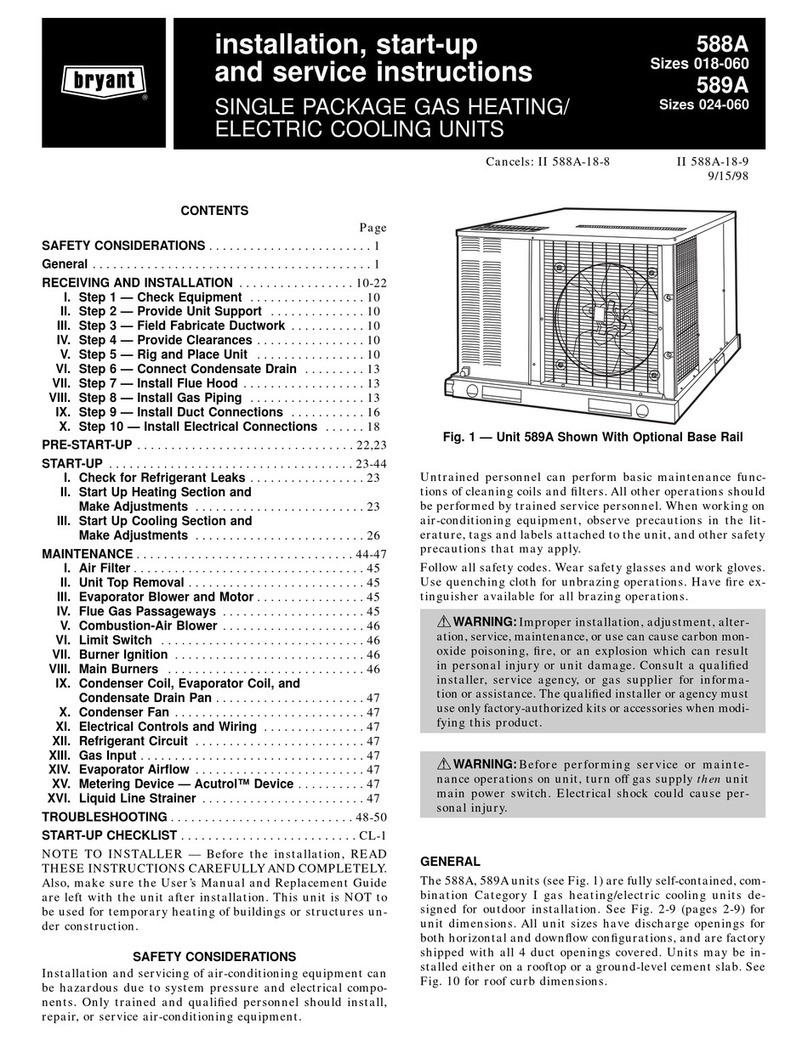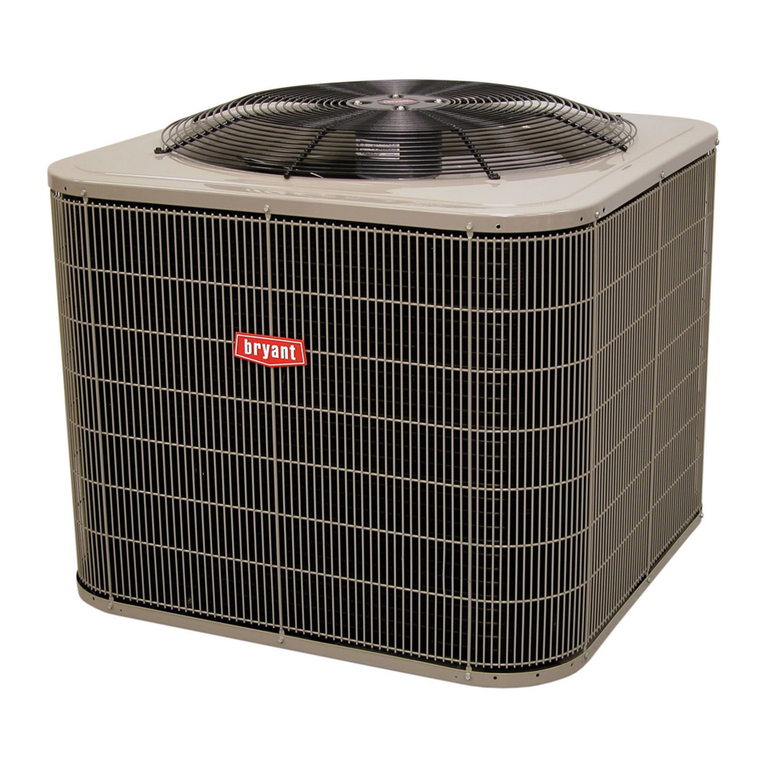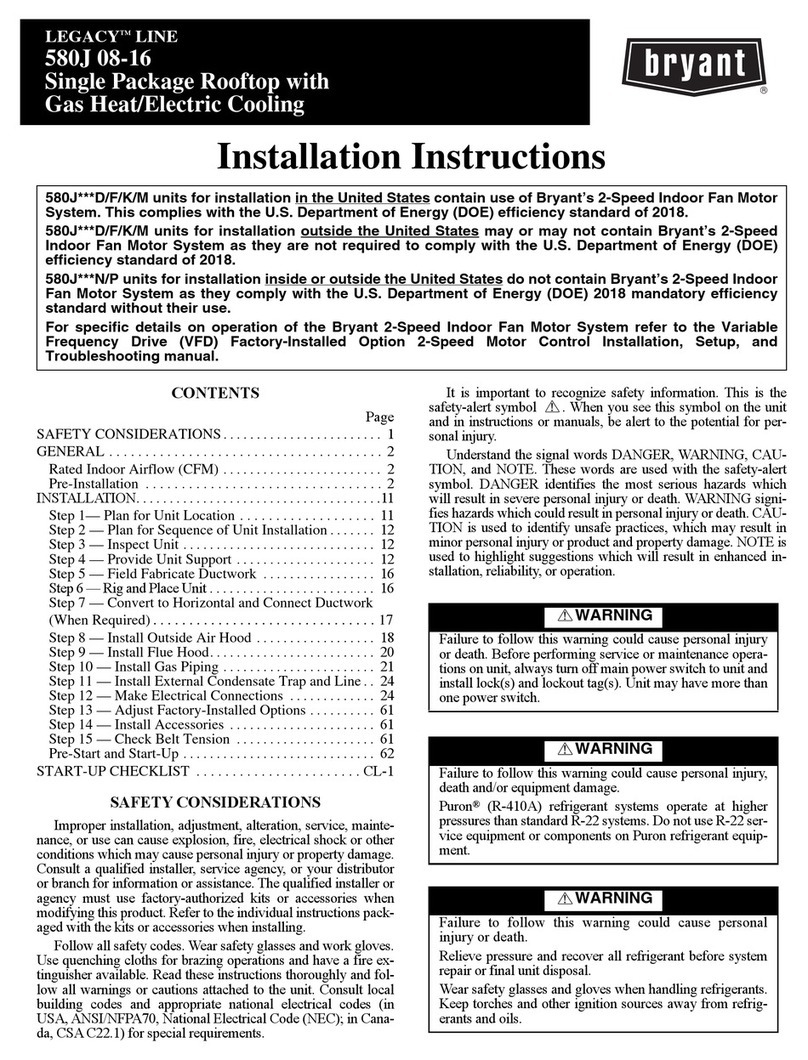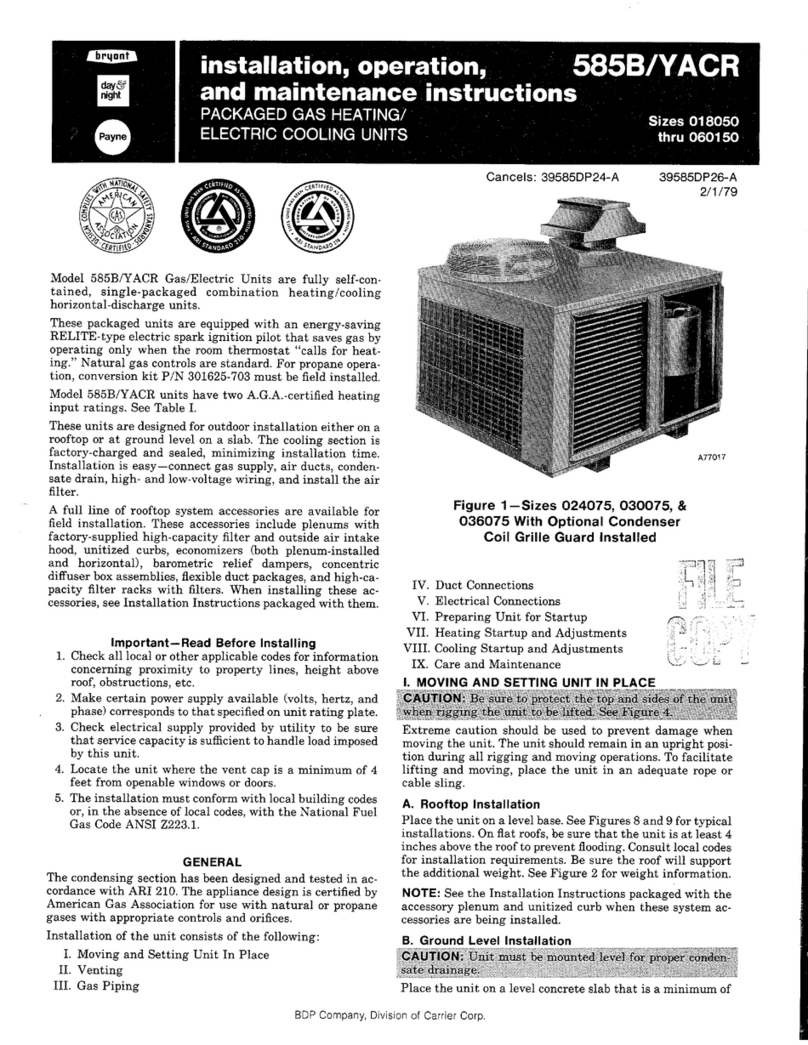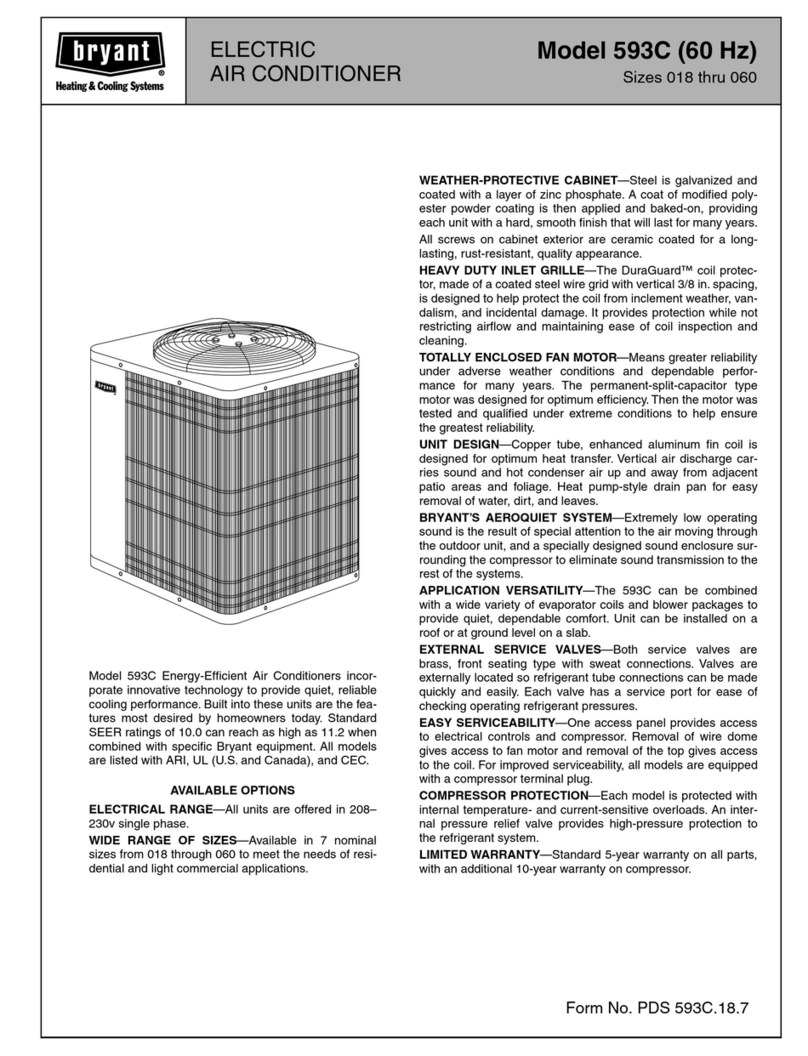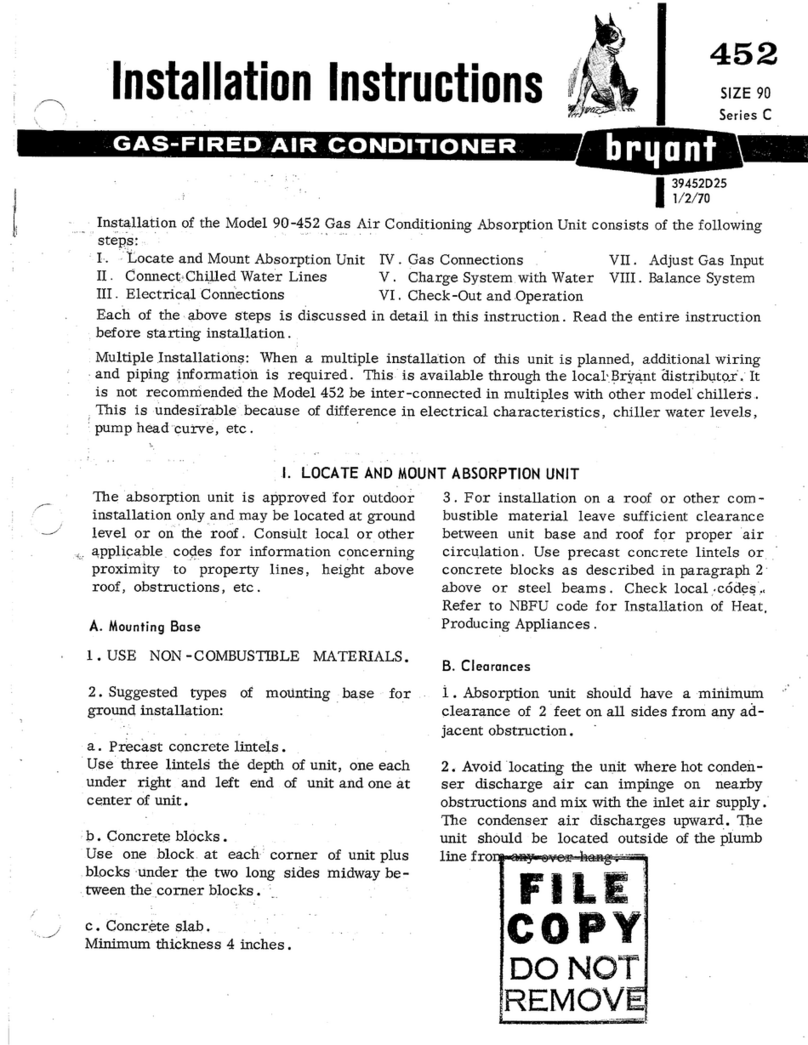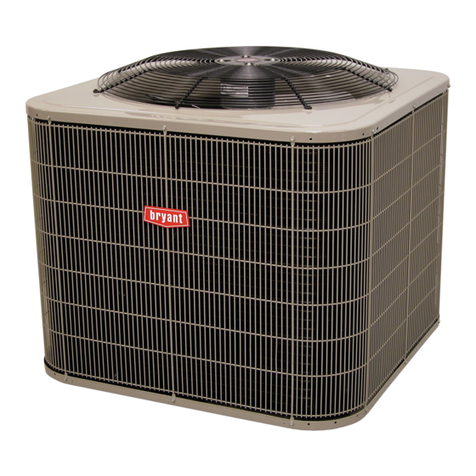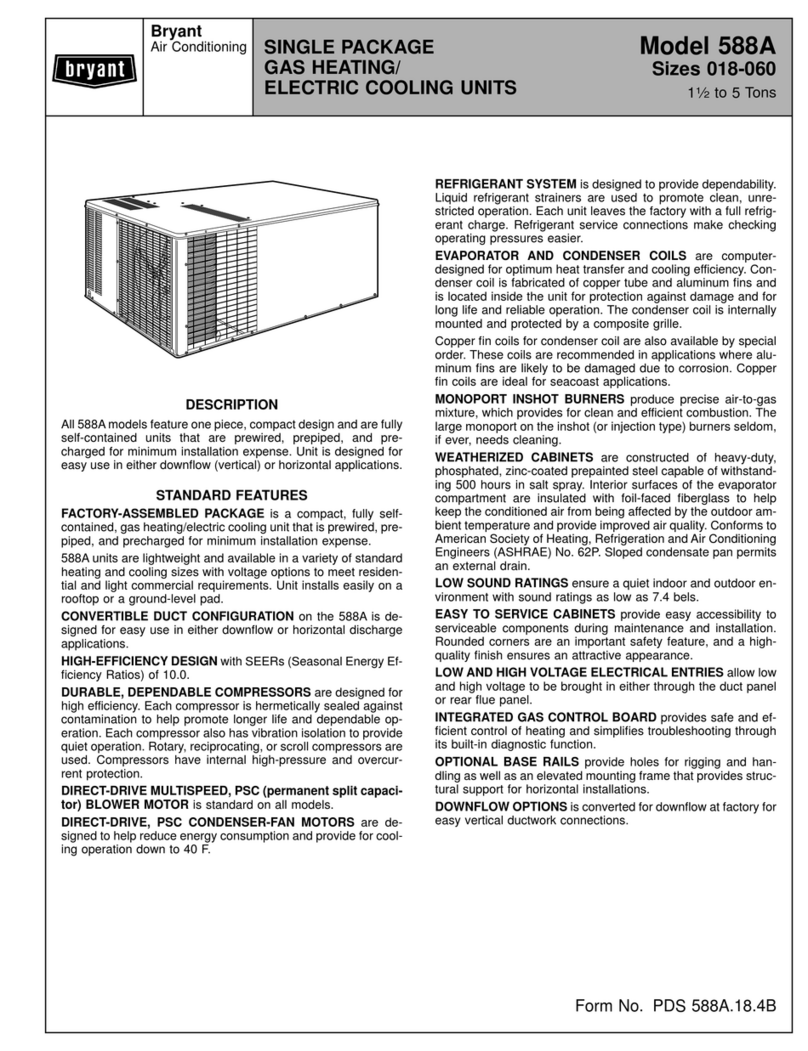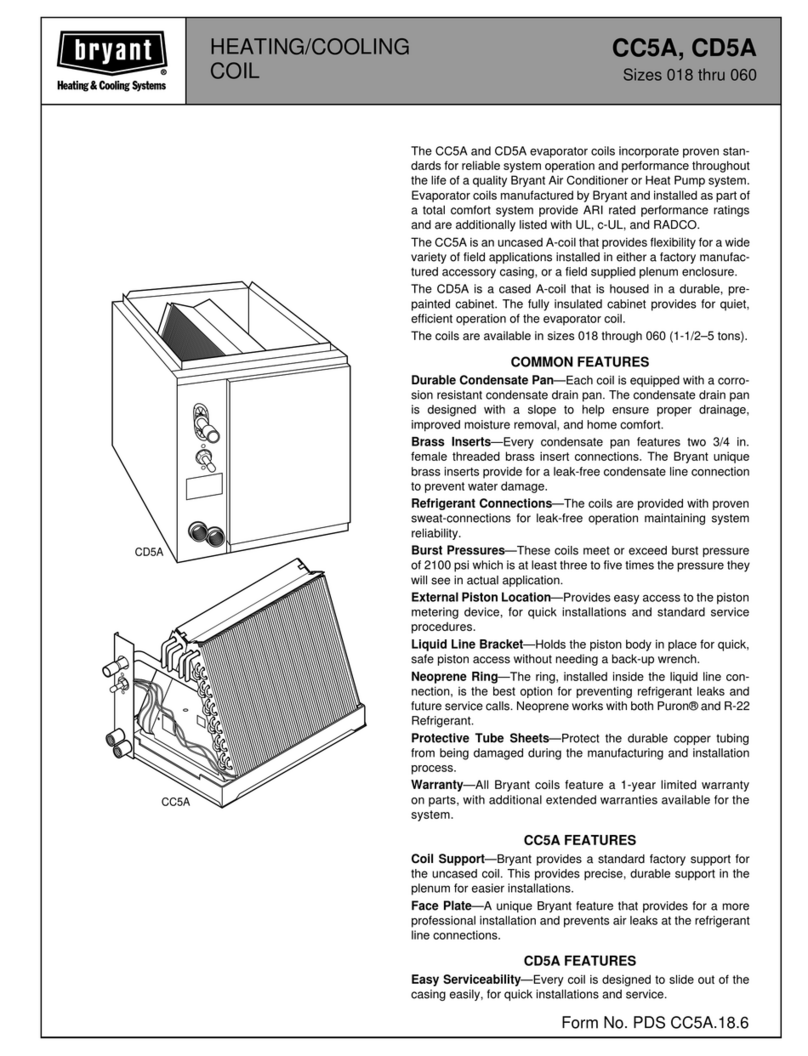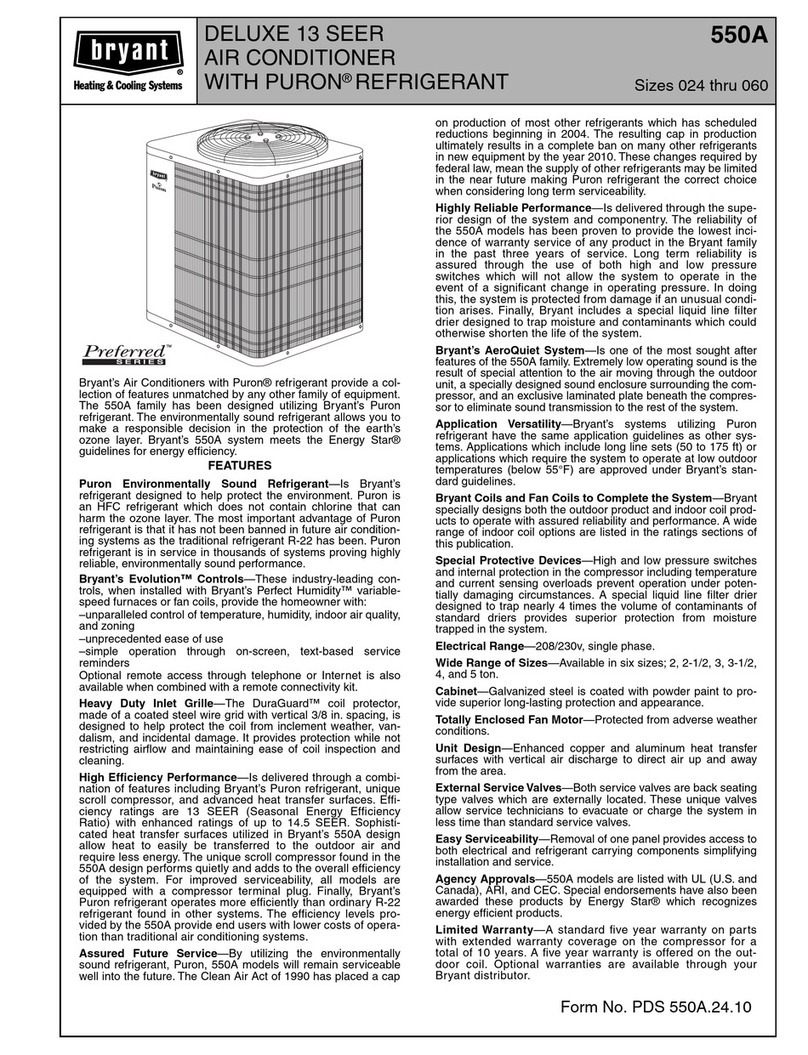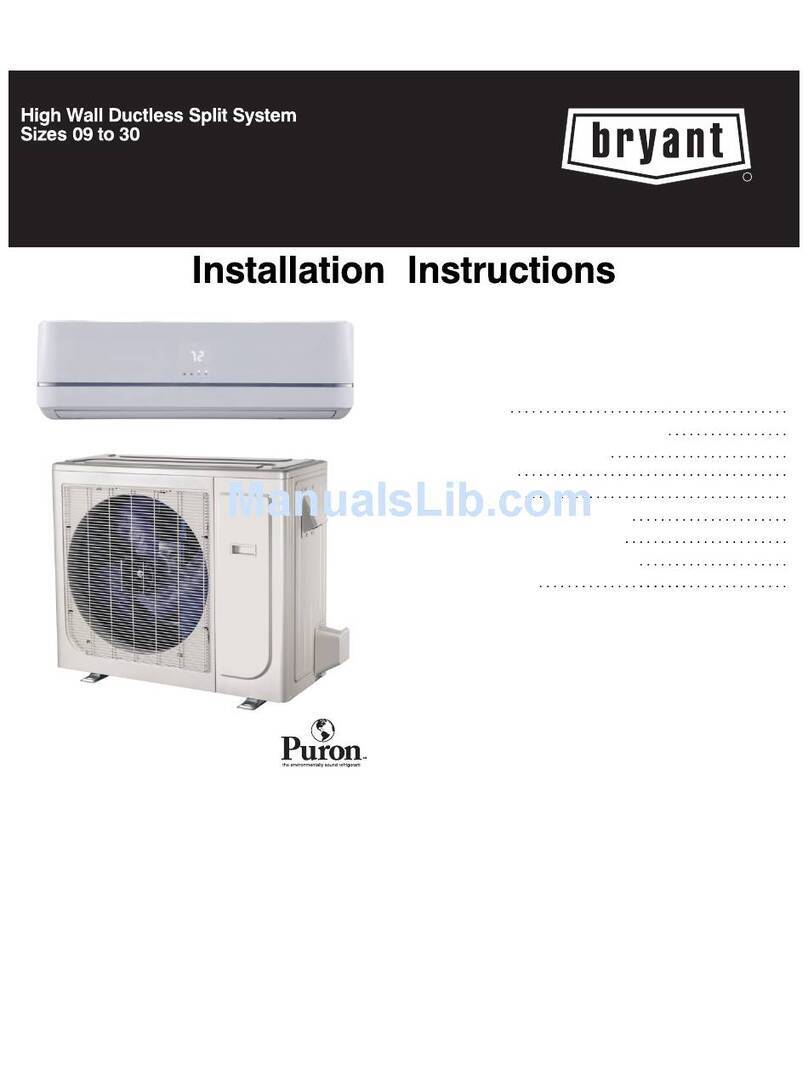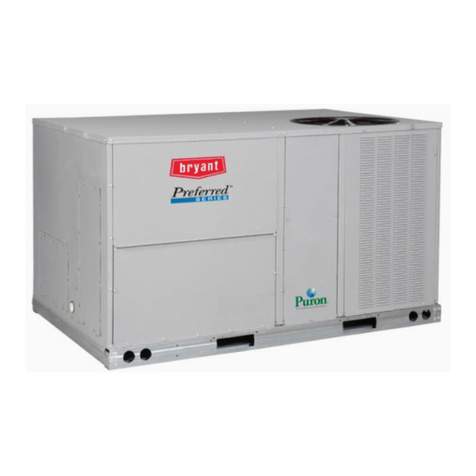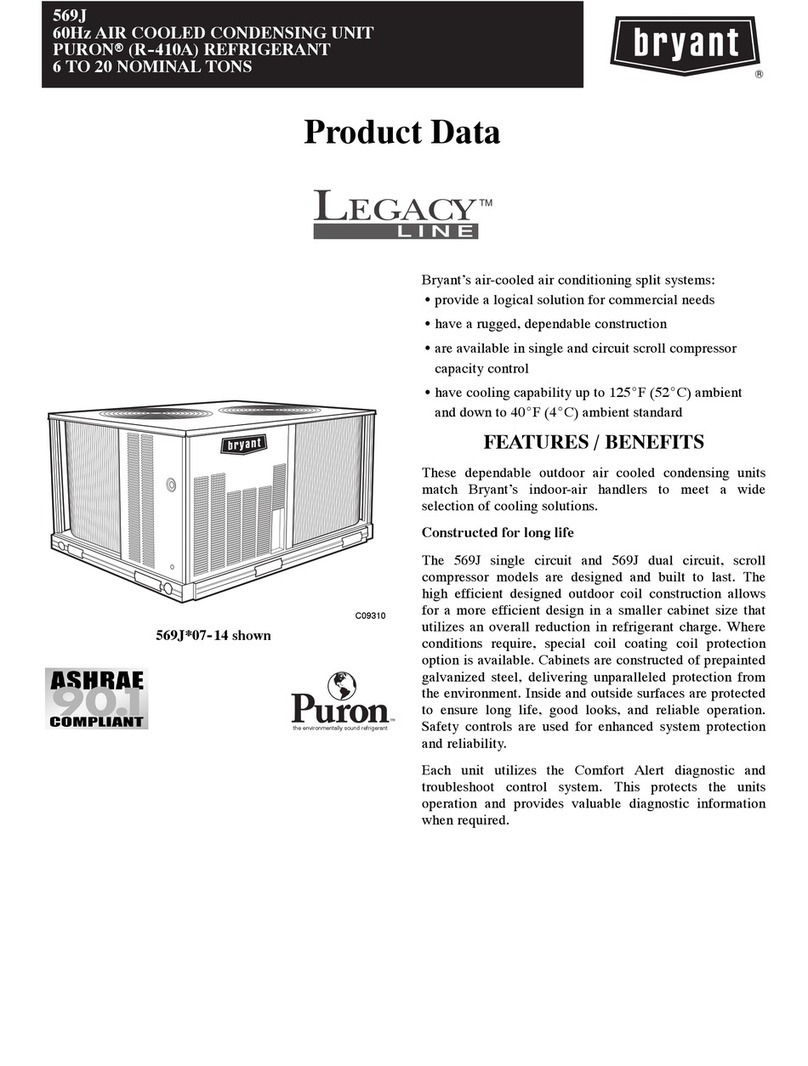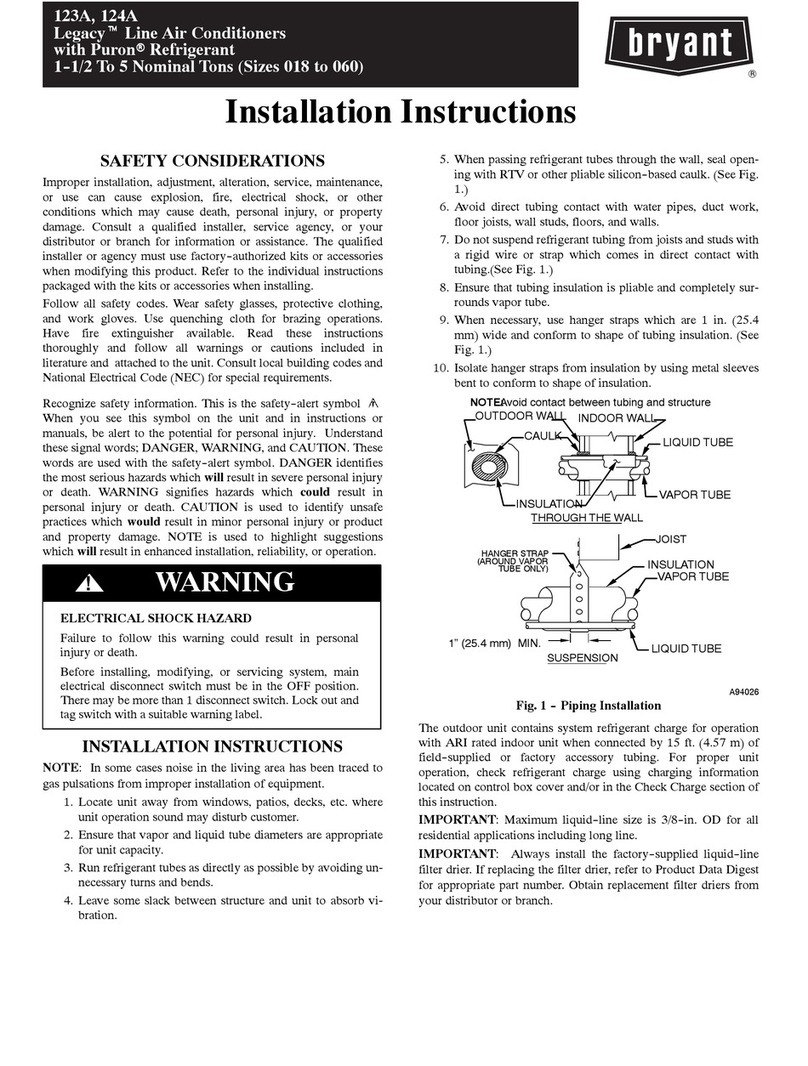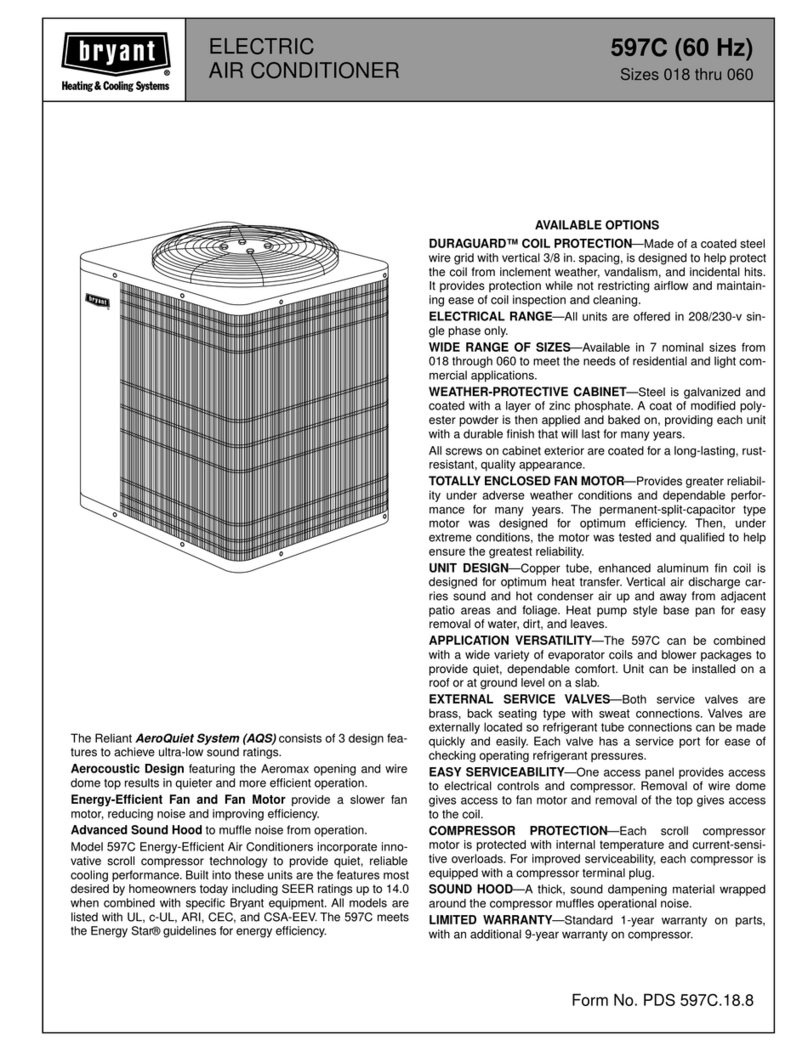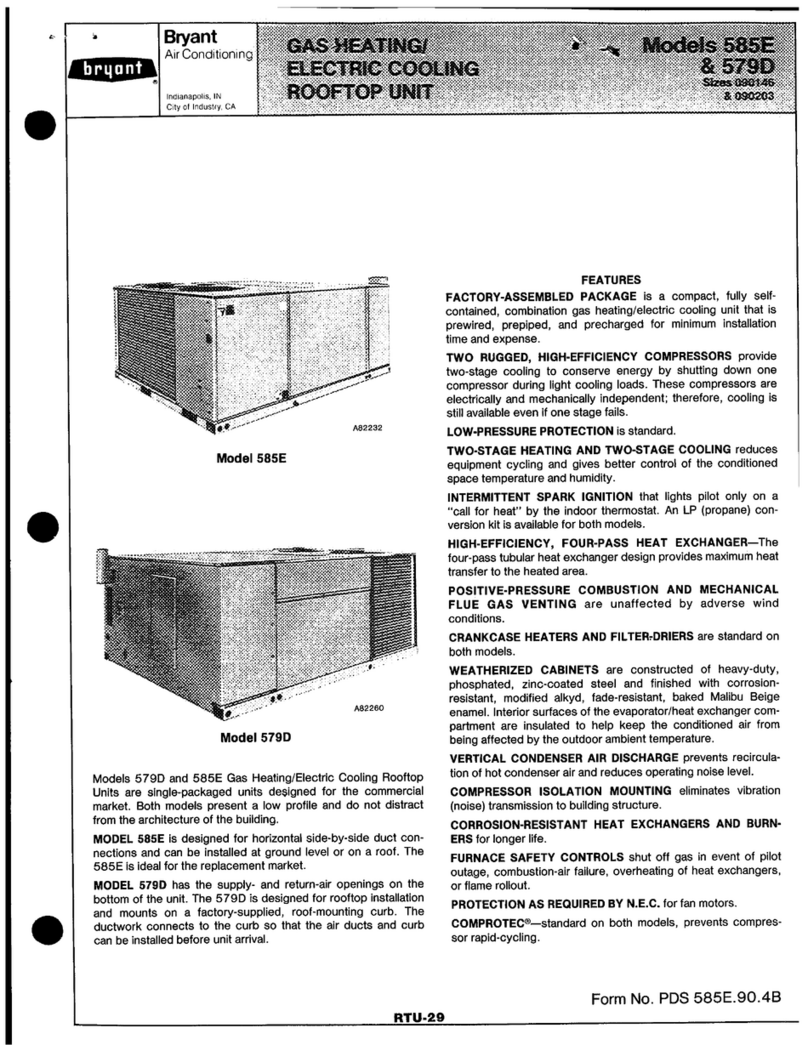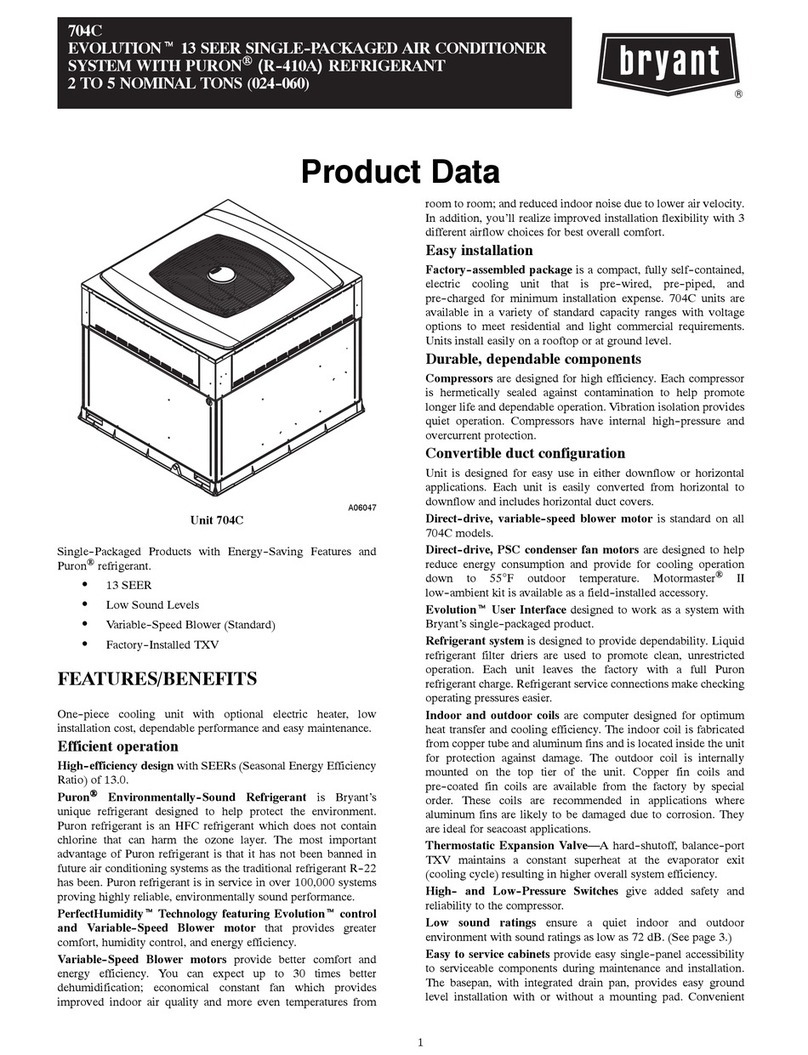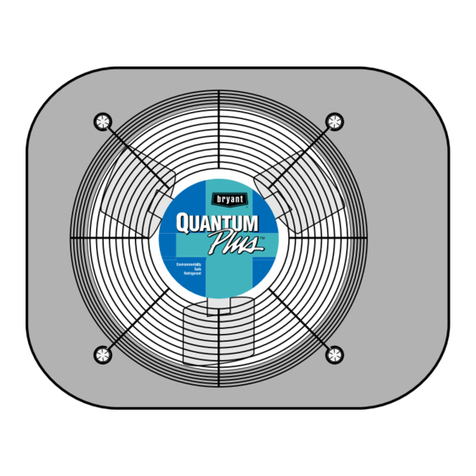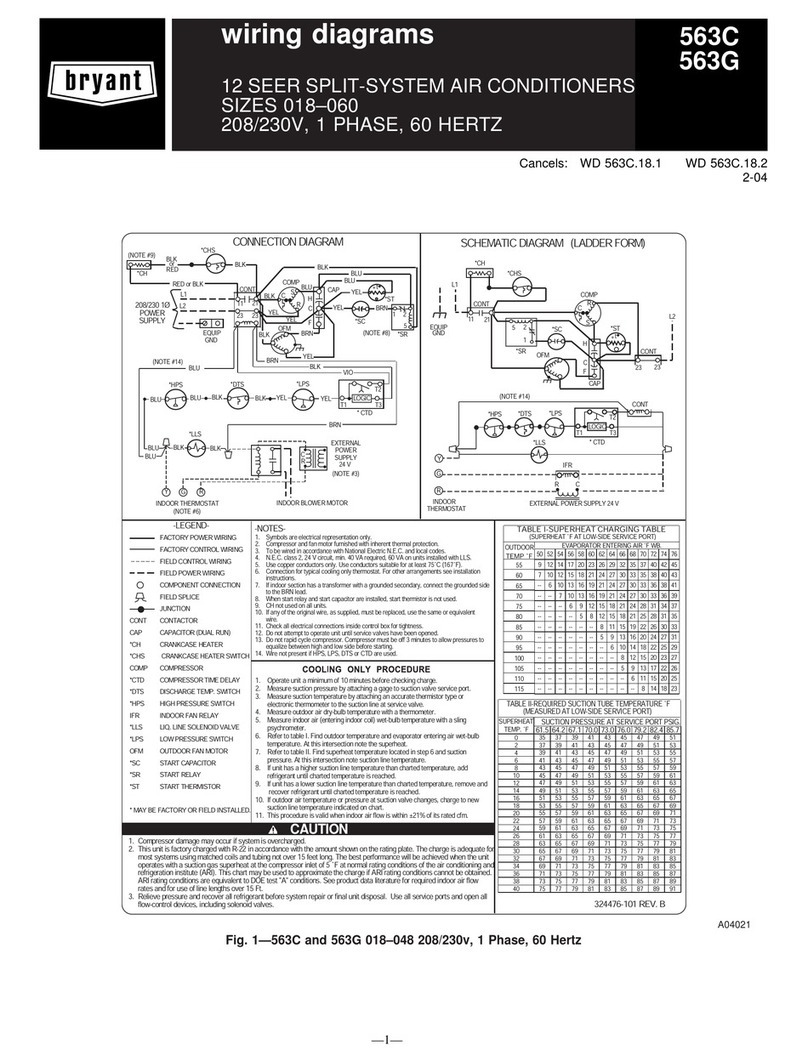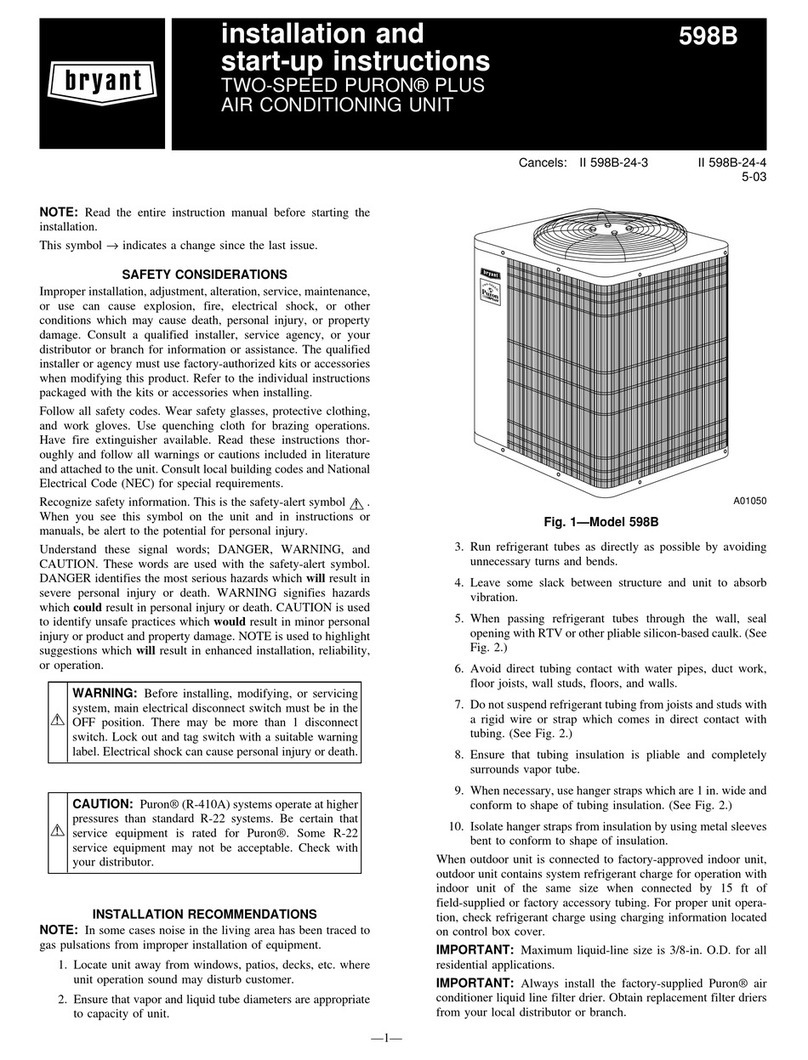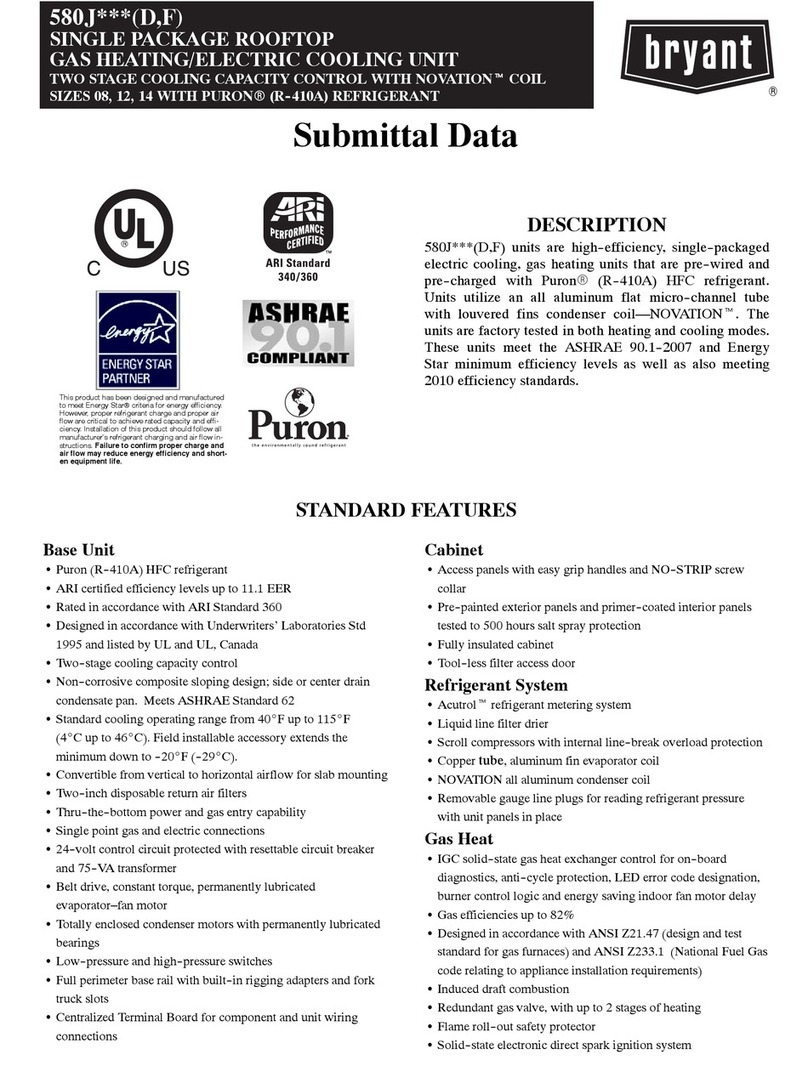
577C--(E, F) Ultra Low NOx: Installation Instructions
Manufacturer reserves the right to change, at any time, specifications and designs without notice and without obligations.
9
Step 6 – Connect Condensate Drain
NOTE: When installing condensate drain connection be sure to comply
with local codes and restrictions.
This unit disposes of condensate water through a 3/4 in. NPT fitting
which exits through the base on the evaporator coil access side. See
Fig. 3 and Fig. 4 for location.
Condensate water can be drained directly onto the roof in rooftop
installations (where permitted) or onto a gravel apron in ground level
installations. Install a field-supplied 2-in. (51 mm) condensate trap at the
end of condensate connection to ensure proper drainage. Make sure that
the outlet of the trap is at least 1 in. (25 mm) lower than the drain-pan
condensate connection to prevent the pan from overflowing (See Fig. 7).
Prime the trap with water. When using a gravel apron, make sure it
slopes away from the unit.
A09052
Fig. 7 – Condensate Trap
Connect a drain tube using a minimum of 3/4-in. PVC or 3/4-in. copper
pipe (all field-supplied) at the outlet end of the 2-in. (51 mm) trap. Do
not undersize the tube. Pitch the drain tube downward at a slope of at
least 1-in. (25 mm) for every 10 ft (3.1 m) of horizontal run. Be sure to
check the drain tube for leaks.
Step 7 – Install Flue Hood
The flue assembly is secured and shipped in the return air duct. Remove
duct cover to locate the assembly (See Fig. 9).
NOTE: Dedicated low NOx models MUST be installed in California
Air Quality Management Districts where a Low NOx rule exists.
These models meet certain California air managment districts maximum
oxides of nitrogen (NOx) emissions requirements of 14 nanograms/joule
or less as shipped from the factory.
NOTE: Low NOx requirements apply only to natural gas installations.
Install the flue hood as follows:
1. This installation must conform with local building codes and with
NFPA 54/ANSI Z223.1 National Fuel Gas Code (NFGC), (in
Canada, CAN/CGA B149.1, and B149.2) latest revision. Refer to
Provincial and local plumbing or wastewater codes and other
applicable local codes.
2. Remove flue hood from shipping location (inside the return section
of the blower compartment-see Fig. 9). Remove the return duct
cover to locate the flue hood. Place flue hood assembly over flue
panel. Orient screw holes in flue hood with holes in the flue panel.
3. Secure flue hood to flue panel by inserting a single screw on the top
flange and the bottom flange of the hood.
Step 8 – Install Gas Piping
The gas supply pipe enters the unit through the access hole provided.
The gas connection to the unit is made to the 1/2-in. (12.7 mm) FPT gas
inlet on the gas valve.
Install a gas supply line that runs to the heating section. Refer to the
NFGC for gas pipe sizing. Do not use cast-iron pipe. It is recommended
that a black iron pipe is used. Check the local utility for
recommendations concerning existing lines. Size gas supply piping for
0.5 IN. W.C. maximum pressure drop. Never use pipe smaller than the
1/2-in. (12.7 mm) FPT gas inlet on the unit gas valve.
For natural gas applications, the gas pressure at unit gas connection must
not be less than 4.0 IN. W.C. or greater than 13 IN. W.C. while the unit is
operating. For propane applications, the gas pressure must not be less
than 11.0 IN. W.C. or greater than 13 IN. W.C. at the unit connection.
A 1/8-in. (3.2 mm) NPT plugged tapping, accessible for test gauge
connection, must be installed immediately upstream of the gas supply
connection to the gas valve.
When installing the gas supply line, observe local codes pertaining to
gas pipe installations. Refer to the NFPA 54/ANSI Z223.1 latest edition
(in Canada, CAN/CGA B149.1).
NOTE: In the state of Massachusetts:
1. Gas supply connections MUST be performed by a licensed plumber
or gas fitter.
2. When flexible connectors are used, the maximum length shall not
exceed 36 inches (915 mm).
3. When lever handle type manual equipment shutoff valves are used,
they shall be T-handle valves.
4. The use of copper tubing for gas piping is NOT approved by the
state of Massachusetts.
In the absence of local building codes, adhere to the following pertinent
recommendations:
1. Avoid low spots in long runs of pipe. Grade all pipe 1/4 in. (6.35
mm) for every 15 ft (4.6 m) of length to prevent traps. Grade all
horizontal runs downward to risers. Use risers to connect to heating
section and to meter.
2. Protect all segments of piping system against physical and thermal
damage. Support all piping with appropriate straps, hangers, etc.
Table 2 – Maximum Gas Flow Capacity*
*. Capacity of pipe in cu ft of gas per hr for gas pressure of 0.5 psig or less. Pressure drop of 0.5-IN. W.C. (based on a 0.60 specific gravity gas). Refer to Table 2 and National Fuel
Gas Code NFPA 54/ANSI Z223.1.
Nominal
Iron Pipe
Size (in.)
Internal
Diameter
(in.)
Length of Pipe ft (m)†
†. This length includes an ordinary number of fittings
10
(3)
20
(6)
30
(9)
40
(12)
50
(15)
60
(18)
70
(21)
80
(24)
90
(27)
100
(30)
125
(38)
150
(46)
175
(53)
200
(61)
1/2 .622 175 120 97 82 73 66 61 57 53 50 44 40 — —
3/4 .824 360 250 200 170 151 138 125 118 110 103 93 84 77 72
1 1.049 680 465 375 320 285 260 240 220 205 195 175 160 145 135
1-1/4 1.380 1400 950 770 600 580 530 490 460 430 400 360 325 300 280
1-1/2 1.610 2100 1460 1180 990 900 810 750 690 650 620 550 500 460 430
WARNING
!
CARBON MONOXIDE POISONING HAZARD
Failure to follow this warning cold result in personal injury or death.
The venting system is designed to ensure proper venting. The flue hood
assembly must be installed as indicated in this section of the unit
installation instructions.
TRAP
OUTLET
1-in. (25 mm) min.
2-in. (51 mm) min

